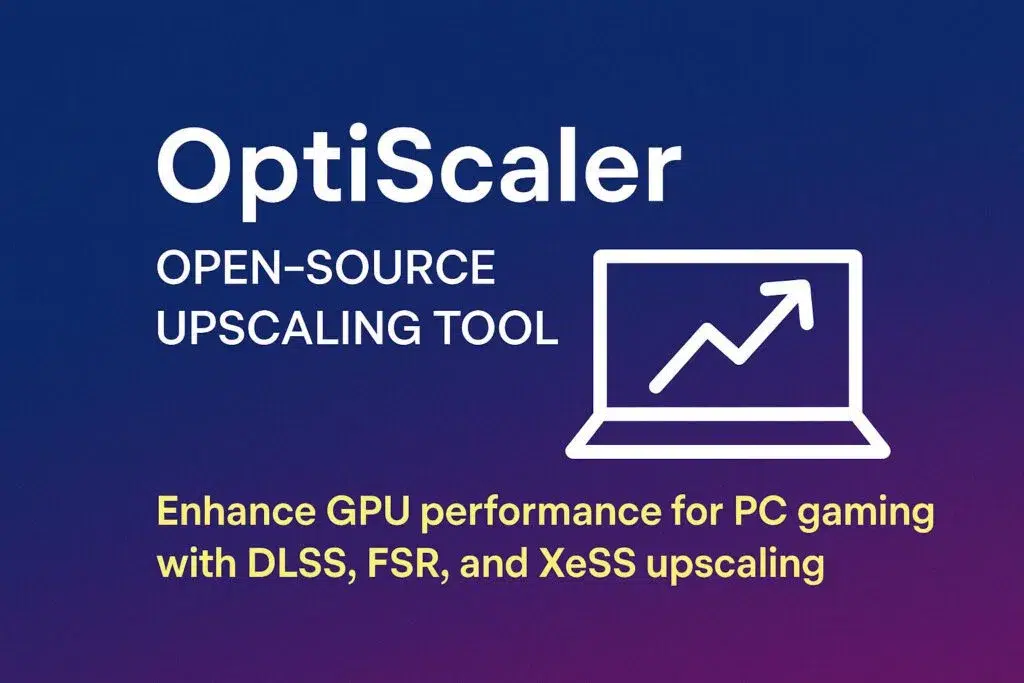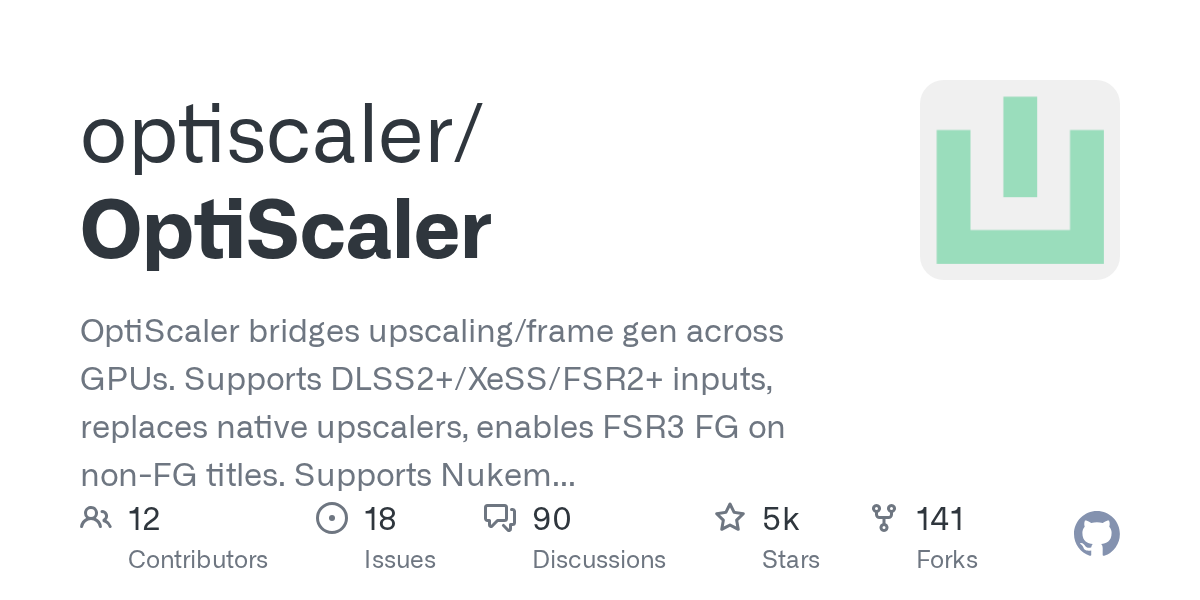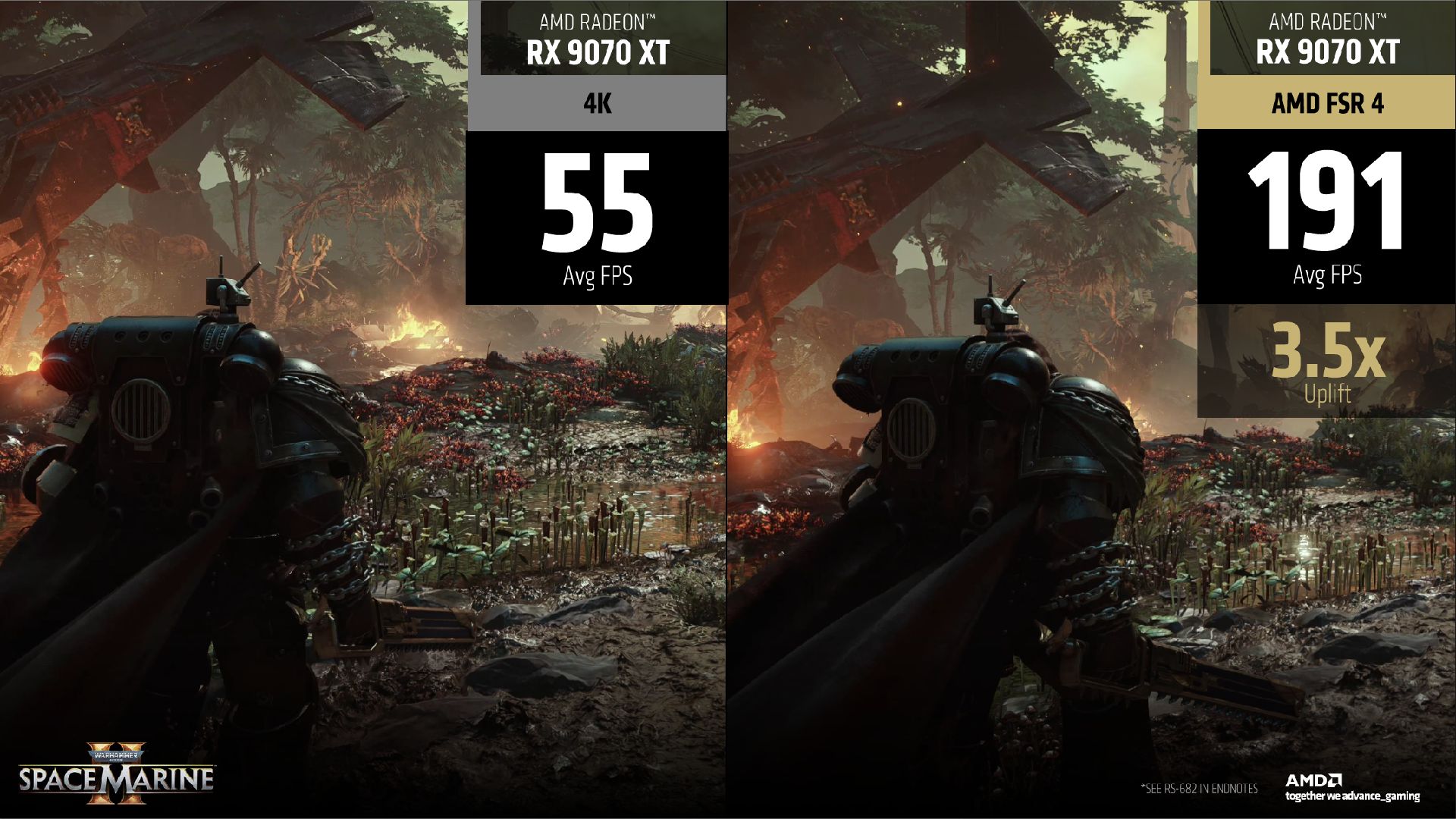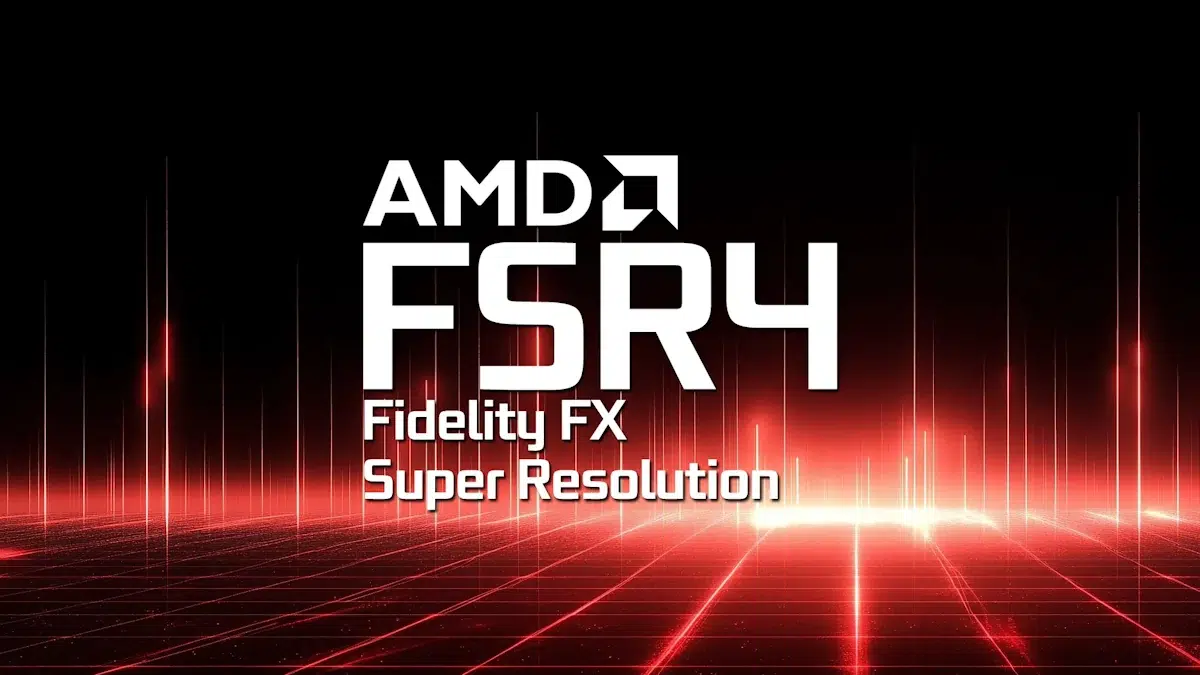- OptiScaler replaces native upscaling with DLSS, FSR 2/3/4 or XeSS and adds OptiFG for FG on DX12.
- Extensive API support (DX11/DX12/Vulkan), with FSR4 limited to RDNA4 and XeSS updated to 2.1.
- Advanced settings (RCAS/MAS, LOD, anisotropy, spoofing, ASI plugins, Anti-Lag 2, Reflex).
- 0.7.8 improves stability: typeless fixes, FSR4 models, w/Dx12, overlay, and DLL autoloading.

If you play on PC and like to tinker with image quality and performance, OptiScaler is one of those mods that changes your game. . It allows you to replace a game's built-in upscaling with a different one, add frame generation, and open up a range of advanced settings rarely available to the average user.
The beauty is that it works on titles that already integrate technologies such as DLSS 2+, FSR 2+/3+ or XeSS, and from there lets you choose the rescaling backend and fine-tune it to your liking . Additionally, with OptiFG and mod support like dlssg-to-fsr3, there is potential to enable Frame Generation where it doesn't exist by default, or improve it where it fails.
What is OptiScaler and what does it solve?
OptiScaler It is a middleware that sits between the game and the upscaler. In practice, it intercepts the title's calls (the rescaling inputs that the game supports ) and redirects them to the upscaling engine of your choice. Or simply put: in the game menu you choose the "Input" (e.g., DLSS), and in the OptiScaler overlay you select the "Output" (e.g., FSR 3/4) so that The final render is signed by the technology you prefer. .
Currently, the OptiScaler core allows combining XeSS, FSR 2.x, FSR 3.x, FSR 4 (limited to RDNA4) and DLSS in titles that already support upscaling. It doesn't stop there: it adds tweaks like RCAS and MAS, output scaling, DLSS presets, ratio or DRS overrides, and many more. tuning techniques that make a difference.

How it works inside
The conceptual flow is simple: Inputs → OptiScaler → Outputs The game starts its rescaling pipeline with the default API, OptiScaler hooks into it and forwards the image reconstruction to the alternative of your choice. This way, you can, for example, force FSR 3.1 on a game that only exposes DLSS 2 , or bring XeSS to an FSR-ready title.
For engines like Unreal Engine there are nuances: the UE XeSS plugin does not expose depth, and when replacing native XeSS you can break other internal rescalers . In those cases, OptiScaler still lets you apply RCAS sharpening over XeSS to alleviate the blur. With FSR, starting with the 3.1 branch, the API is more standardized and support should be full; with older FSR 2.x/3.x versions, it will depend on how each studio implements its interface and in EU, sometimes you will need to adjust ini.
Supported APIs and rescalers
OptiScaler works with DirectX 11, DirectX 12 and Vulkan, although Each API limits which backends are available The OptiFG layer for Frame Generation, on the other hand, is only supported on DX12.
DirectX 12
- xess (default in DX12)
- FSR 2.1.2 and 2.2.1
- FSR 3.x (includes compatibility with 2.3.x)
- FSR 4.0.x via FSR 3.x route on DX12 (RDNA4 only)
- DLSS (NGX)
DirectX 11
- FSR2.2.1 (default, native DX11)
- FSR3.1.2 (unofficial port for native DX11)
- DLSS (native DX11)
- XeSS 2.x (native DX11, Intel ARC only)
- XeSS/FSR 2.1.2/2.2.1/FSR 3.x with the bridge to DX12 via D3D11on12
- FSR 4.0.x via FSR 3.x on DX12 (RDNA4 only)
Vulkan
- FSR 2.1.2 (default) and 2.2.1
- FSR3.1 (and FSR 2.3.2)
- DLSS
- XeSS 2.x

Frame Generation with OptiFG and compatible mods
Since version 0.7, OptiScaler includes OptiFG, an experimental approach to injecting Frame Generation (FSR3 FG style) in DX12 titles that don't have it by default or where native FG is problematic. It's especially useful as a last resort, and may require tweaks like HUDfix, which, while it has gained stability, It is still considered experimental.
Additionally, support for the mod was added. Nukem (dlssg-to-fsr3), which converts DLSS FG to FSR in games with native DLSS-FG. This mod and others like Fakenvapi not included, and in some cases activate Reflex, Anti-Lag 2 (on RDNA1+), LatencyFlex or XeLL (for Intel). The integration of Fakenvapi allows, among other things, Disable FlipMetering to smooth frametimes when Nukem is active in titles with DLSS4.
Step-by-step installation
The fast track is to download the Nightly or latest stable releases from their collaborative development repository. There you'll find the updated assets, with virtually everything you need. For RDNA4 and FSR4 there is an extra requirement: the amdxcffx64.dll file that Windows installs when it detects a Radeon RX 9000. You have it in Windows\System32\ (use the search engine on that route if you get lost).
Place the OptiScaler files and the aforementioned DLL in the game folder alongside the executable. For example, in Cyberpunk 2077 installed on Steam, this would be: Program Files (X86)\Steam\steamapps\common\Cyberpunk 2077\bin\x64. If you play on GOG or Epic, the route changes, of course, but the idea is always the same: next to the game .exe.
With everything in place, run the configuration script (a .bat file like "OptiScaler Setup"). You'll see several prompts in the console; you can go with the default option by pressing 1, and if your GPU is AMD, choose 1 again when you touchIf you want to enable the use of NVIDIA DLSS inputs, you can also set it to 1. It's not mandatory to test FSR4, but it gives you scope for more combinations.
The installer will confirm completion and prompt you to press a key to close. From there, launch the game, enable a rescaler in the options (DLSS/XeSS/FSR), and, once in 3D, Open the OptiScaler overlay with its shortcut to choose the final backend, fine-tune presets, or apply filters.
In Linux a has been added installation and uninstallation script which speeds up the process under Proton/Wine, and on Windows the project now automatically applies game-specific patches to improve the experience right from the start.
Advanced settings and customization
Beyond changing the rescaler, OptiScaler brings a multitude of switches that make it a great tool for Gaming. You can touch RCAS and MAS sharpness, output scaling, DLSS presets, as well as forcing internal ratios and overriding DRS to maintain stable temporal resolution.
They have arrived in the overlay design improvements and new options such as the jitter counter, keyboard shortcut modifications, and reading hexadecimal values in the INI (very useful for keys or device IDs). Fixed keys that were "stuck" when opening the menu and Unwanted replays with gamepad on DX11.
For the latency part, if you integrate Fakenvapi, you can hook up Reflex and activate Anti-Lag 2 (RDNA1+), LatencyFlex or XeLL on Intel. As new features, there is experimental Anti-Lag 2 in Vulkan and the option to disable FlipMetering (key for stabilize frame times when using the Nukem mod in games with DLSS 4).
Image quality controls have also been strengthened: Anisotropic filters and Mipmap LOD bias adjustable, a revamped FPS limiter and the Performance Overlay with JustFPS mode for see only the frames per second if you don't want any more information on the screen.
FSR4: new features, models, and image quality
With the arrival of RDNA4, AMD has made the leap to FSR 4, a rescaling with an improved model supported by 3.1. OptiScaler now allows it to be injected into supported games, and in fact, typed/typeless formats were fixed so that stop crashing titles that used to crash. Additionally, XeSS input support for FSR4 has been added for Unreal Engine, filling a much-needed gap.
A key point is the model selection in FSR4Internally, AMD appears to map: Model 0 for Native AA, 1 for Quality, 2 for Balanced, 3 for Performance; 5 would be for Ultra Performance. OptiScaler allows you to choose the model and, intelligently, Forces Model 1 in the Quality/Ultra Quality presets because in some games it was redirected incorrectly (e.g. to 0) and noticeable shimmering/shimmering appeared. AMD is aware of this issue and plans to fix it in future versions.
The practical reading is that Model 0 usually gives a more aggressive sharpness (it has less historical accumulation), while a Model 2 It is somewhat softer but stable when the title pushes Model 0 into presets that don't fit. This model management makes a difference in temporal stability and fine detail, especially in scenes of high frequency such as vegetation or grids.
Engine inputs and compatibility considerations
In Unreal Engine, the engine's XeSS plugin does not expose depth, so if you replace XeSS in-game You can disable other title rescaling paths. Still, RCAS over XeSS helps bring clarity. With FSR, since 3.1 the API is standard and compatibility should be broad; in earlier versions, the interfaces were custom-made and it will depend on how the studio programmed it. In the EU, it may you need .ini adjustments so that the buffers fit correctly.
For DX12 inputs and outputs, stability and performance have been improved on the "w/Dx12 upscalers" path. Specific spoofing is available in Intel ARC. Atomic64 for EU. And the XeSS engine has been updated to the version 2.1, increasing quality and compatibility.
Troubleshooting and known issues
- If the OptiScaler overlay doesn't open, check the basics: turn on DLSS/XeSS/FSR in the game menu and try opening it already inside the 3D scene (not from the static menu). On older installations, make sure to launch the overlay during the active render.
- Are you using RTSS (MSI Afterburner, CapFrameX)? Enable the recommended option in RTSS or update to the latest version. And if you are with OptiFG, the most compatible is disable RTSS temporarily to avoid overlay/injection conflicts.
- Remember that HUDfix is still experimental. It has gained stability, but sometimes unexpected closures may occur on NVIDIA GPUs that are difficult to reproduce. RTSS Reflex Injection detection has also been added for diagnose hooking duplicates.
Recently fixed or improved cases: FFX VK and XeSS VK entries (fixes for example crashes in Indiana Jones and the Great Circle), Unity DX11 and FSR3 DX11 fixes, Fix for FF14 crashes with certain plugins, Wine exports patch improvements, jitter scaling for XeSS inputs, No Man's Sky pre‑RDNA4 stable now, OG Death Stranding (not Director's Cut) working, Doom TDA FFX VK fixes after Update 2 and Solutions for Prey Luma Remastered when using upscalers w/Dx12.
Attention with WUCHANG: crashes on startup were fixed, but Do not update Streamline files manually; for some reason it breaks Opti on that title. By the way, a discreet splash message when loading OptiScaler (you can disable it in the INI, using the DisableSplash option) to quickly check that everything is running; on Linux, it is automatically disabled.
A practical detail: OptiScaler autolocates DLSS and DLSSG DLLs with greater reliability, and now integrates a "Show Detected UI" screen that has been backported to detect games and routes with more finesse.
Support for external mods and spoofing
In addition to NukemFG, OptiScaler incorporates a experimental Streamline spoofing which, by default on AMD/Intel and even with Dxgi=false, unlocks DLSS FG and Reflex when there are no extra game checks. In Unreal Engine, it does not open DLSS FG at the moment, although Reflex does usually remain operational..
If you want fine-tuning on the spoofed device, the INI now supports custom spoofing options, and for numeric parameters you can use hexadecimal formats. This is ideal if you need to define non-standard IDs or shortcuts without going crazy.
Notes on privacy in community sources
When checking threads and changelogs on social platforms you will come across cookie and consent notices that sometimes block content if you don't agree. This is normal on sites like Reddit; if you see that notice, log in or adjust your preferences to access complete technical information.
The entire OptiScaler ecosystem has evolved with version 0.7.8 (nickname Typeless): from corrections in formats so that FSR4 is stable , through the model selector and new spoofing options, to utilities such as loading ASI plugins, the verification splash, updating XeSS to 2.1 and substantial improvements in stability and performance from the w/Dx12 route. If you need FG, OptiFG and dlssg-to-fsr3 support expand your scope; if you're more into fine-tuning, controls for sharpness, LOD, anisotropy, jitter, FPS limits, and latency are key.
With a few precautions (experimental HUDfix, RTSS out with FG, don't touch Streamline where it doesn't belong), the mod allows you to squeeze DLSS, FSR and XeSS in a way that the game menus, on their own, They do not usually offer .
Editor specialized in technology and internet issues with more than ten years of experience in different digital media. I have worked as an editor and content creator for e-commerce, communication, online marketing and advertising companies. I have also written on economics, finance and other sectors websites. My work is also my passion. Now, through my articles in Tecnobits, I try to explore all the news and new opportunities that the world of technology offers us every day to improve our lives.
